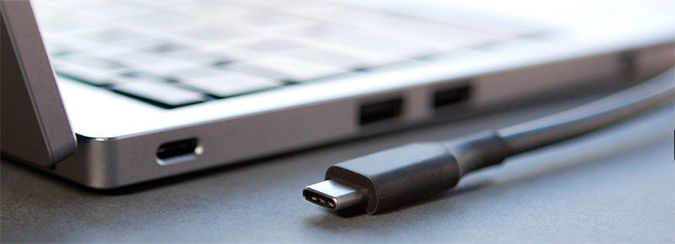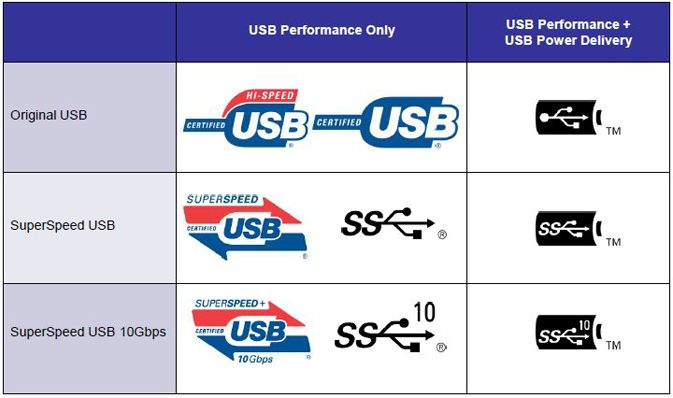How to Buy USB Type-C Cables That Won’t Fry Your Gadgets
The new standard for wired connectivity, USB Type-C, will charge your laptops and phones, transfer data and even send 4K video to your monitors. If you check the inventory at popular retailers, you'll see scores of cables and adapters featuring the reversible connector, but unfortunately, some of them don't work well. A few cables that go from USB Type-C to USB Type-A (aka "legacy" USB) fail so badly that they permanently damage your hardware.
Google Engineer Calls Attention to the Problem
Google software engineer Benson Leung has been buying and reviewing USB Type-C cables, adapters and accessories on Amazon and posting about it to his Google+ account, making him, perhaps accidentally, the leading consumer advocate in this space. On Feb. 1, Leung posted to Google+ that a cable ruined his equipment, including a $1,499 Chromebook Pixel.
"I've done an analysis of the failure," he wrote. "It's a really bad mistake they made."
Three days later, The Verge's Dieter Bohn wrote an Op-Ed piece and said USB Type-C is "playing Russian Roulette with your laptop." Bohn's Nexus 6P drew too much power from his MacBook Air while using a third-party cord, frying the machine and making the USB Type-C ports work only intermittently. A bad cable can ruin a machine.
MORE: Splurge or Purge: What Laptop Features Are Worth the Money?
Which Cables Are Dangerous?
Sign up to receive The Snapshot, a free special dispatch from Laptop Mag, in your inbox.
According to Leung's FAQ, the problem occurs when you connect a USB Type-C-enabled device such as a phone to a USB Type-A port on your laptop or hub. The USB Type-C phone may be specced for 3 amps of power, while the laptop's USB port, like most Type A chargers, can deliver only 2 amps or less. With a 56K Ohm resistor and the right components on board, a standards-compliant cable will make sure that the client tries to draw only as much electricity as the host can provide.
A poor-quality wire, however, fools the phone into thinking that it's connected to a 3-amp- capable power source. When the phone tries to draw 3 amps, it can cause permanent damage. Leung fried both the USB ports (and the host controller) on his Pixel C laptop by attaching it to an iPad charger, using a faulty cable. This isn't a problem with USB-C to USB-C connections, which can handle higher currents without an issue.
Jeff Ravencraft, president and COO of the USB Implementers Forum, which sets the standards for Type-C, was quick to point out that though the problem cable is USB Type-C to USB Type-A, you need to be careful with any cable.
"This can happen with any cable," he said. "The fact that it's a Type-C cable that he tested is, it's just the cable the tested. Not only USB cables … whether it's some other cable for other technologies, if these cables aren't built correctly, they can cause issues. It's like buying a coffee maker that has an electrical plug that was not built to a standard, not passed through any regulatory review."
How to Find Safe USB Type-C Cables
Leung is helpful. So are spreadsheets cobbled together by denizens of the Internet. But how can the average consumer pick the right cable before ruining his smartphone or laptop?
Looking at the Plug
For starters, look at the USB plug itself.
"A good cable uses a deep-draw extrusion method that produces a Type C plug that is a single piece of metal and does not have a visible seam on one side of the plug," said Tim North, a senior product manager at Monoprice (which recently had a cable approved by Leung). A folded and stamped connector, North explained, is usually made of zinc tin alloy which is easily broken and may not handle the cable's power requirements.
But without the cable in hand, it's hard to say for sure.
"Maybe this company just made a mistake," Ravencraft said. "Maybe their instructions were wrong, maybe it's a single cable. Is it all their cables? But again, we don't know. We do know of this one cable. But those are some of the questions that also need to be asked."
Certified by the USB-IF
Consumers won't be able to tell by looking at a cable if it has the appropriate resistor or has been tested to be compliant with USB Type-C standards, but buying one that is certified by the USB-IF is a good start. Rahman Ismail, CTO of the USB-IF, explained that their program, while not a replacement for local, state, federal or international regulation requirements, is still quite comprehensive.
"We prematurely age the cable," Ismail said, "and simulate what happens to the cable after three years." They also make sure cables can stand up to 10,000 repetitive uses, cut cables open to look at the wiring and electronics inside and check to make sure that they won't overheat. Ismail believes the average compliance test takes several weeks, but that depends on the number of issues encountered and communication time between the test labs and the manufacturer.
They have not had the chance to test the cable that Leung encountered, but Ismail believes from what he has read that not even the minimum tests were performed before shipping.
MORE: The Big Short: Laptop Makers Exaggerating Battery Life
Logos to Look For
The USB-IF has a number of logos that manufacturers can use if accessories pass compliance testing, but consumers may not see them or know about them. They may be located on product packaging, but that's not always the case. Additionally, those logos are rarely (if ever) shown on popular online shopping sites like Amazon and Newegg, leaving customers guessing even when buying from the biggest online stores. In the case of the cable Leung encountered, the company fraudulently used a USB-IF logo. (Ravencraft said the matter is being investigated.)
Laptop Mag reached out to Amazon and Newegg multiple times for comment. Neither company responded to these inquiries.
The USB-IF can't police companies and force them to submit cables for standards testing; it isn't a regulatory agency. But consumers can look for certain telltale signs that cables will work with their devices.
Cables from Trusted Brands
"Most of the Type-C products that consumers are buying today, let's say your Nexus phone, MacBook, your drive, they're coming with the cable," Ravencraft said. "I have a Nexus 5X. It came with the wall charger and Type-C plug, and that all came from [Google]. I have a high level of confidence as a consumer that all of those things should work fine together because they came from a top-tier manufacturer."
Ravencraft also urged consumers to buy based on brands they know and trust, rather than buying the cheapest one available. He appreciates Leung and others who are testing cables so that others can do research online, but he can't vouch for their results.
"If you're buying a cable as you exit the convenience store and the cable costs less than a bottle of Coke, you might want to think about it," he said and laughed.
A List of Certified Cables
The USB-IF has a list on its website of USB Type-C cables (61 as of this writing) that have passed its tests. A representative said that it's updated often — every few weeks, at the most.
At the moment, your best options are to use the cable that came with your USB Type-C device, to buy from brands you know or to check against the USB-IF's list of verified cables.
If you don't, your laptop could end up fried like Benson Leung's. But it doesn't have to be that way.
Images via Monoprice, USB Implementers Forum
Andrew is a contributing writer at Laptop Mag. His main focus lies in helpful how-to guides and laptop reviews, including Asus, Microsoft Surface, Samsung Chromebook, and Dell. He has also dabbled in peripherals, including webcams and docking stations. His work has also appeared in Tom's Hardware, Tom's Guide, PCMag, Kotaku, and Complex. He fondly remembers his first computer: a Gateway that still lives in a spare room in his parents' home, albeit without an internet connection. When he’s not writing about tech, you can find him playing video games, checking social media and waiting for the next Marvel movie.



